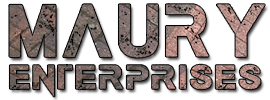There are three basic drive types for a pressure cleaner pump. They are direct, gear, and belt drives. Each has its own benefits and downfalls.
The direct drive pump spins at the same speed as the engine powering it. The pump is also directly mounted onto the shaft of the motor. Benefits of this pump type are its lite weight, size, and cost. Some pitfalls are increased wear on internal parts due to faster shaft speeds, limit of power in available models, and heat and vibration transfer from the engine.
A gear drive pump uses a gearbox to reduce the RPM’s from the motor to the pump. The gearbox and the pump are mounted directly to the motor shaft. Benefits of this type of pump include power in available models, less wear on internal parts due to shaft speeds, less heat transfer from the engine, and dependability. Downfalls are vibration transfer from the motor, size, and weight. Cost is average in this case.
Belt drive pumps use pulleys and belts to transfer the power at reduced RPM’s to the pump. These pumps have less heat transfer and vibration transfer from the motor, greater power in available models, less internal wear, easy to fix drive mechanism (belts), and dependability. Only downfalls are size, weight, and slightly increased cost.
